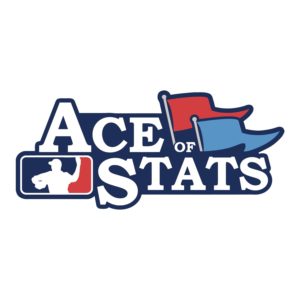Just like preseason football, Summer Sundays accompanied by brunch are, well, fine. Mimosas, Artisanal cheeses, polite conversation… but it is no substitute for the real thing — too many beers, fried foods, and questionably-legal gambling over a full-slot of NFL Sunday games.
One week ago tonight, the Chicago Bears took on the Green Bay Packers, kicking off the NFL’s 100th season. These things are difficult to nail down, and the 1920 inaugural American Professional Football Association (APFA) season was crude by today’s standards, but, unlike the National Association to MLB, it still counts. It is fitting that Chicago hosted, as the team’s most storied figure had an incredibly significant influence on wrestling the nation’s attention from baseball to football.
Forget Iron Mike Ditka. George Halas, legendary founder, player, owner, and coach of the Bears, was a Chicago football wunderkind. He revolutionized the game, guiding his Monsters of the Midway in the 1940s to complete domination, almost 50 years before Da Bears would shuffle their way into the cultural zeitgeist. Halas perfected the modern T-formation. He won a championship 73-0 over the Redskins in 1940. Without Halas, who knows what the NFL would look like today? It certainly takes a village to build something this mighty, but Halas’ influence was as great any other. And that influence was set in motion by a Rube Marquard fastball in 1919… one year before the NFL would take it’s fateful first step.
Success from Failure
After college, and a stint with the Navy during World War I, Halas jumped straight to the New York Yankees. He was a dynamic multi-sport athlete for the University of Illinois, and baseball was really the only pro game in town. During Spring Training 1919, he roped a reportedly grooved fastball off of would-be Hall of Famer Marquard, but injured his hip trying to leg out a triple. In retrospect, kind of embarrassing that a would-be football Hall of Famer couldn’t slide into third base without requiring physical therapy…

He hung in for 22 at-bats that season before being sent to the minors to recover. It turns out, his cup of coffee was the whole damn meal, as the Yankees decided to go in another direction by the time he recovered — they signed some kid named Babe Ruth. Politics, I tell ya…
Halas was crushed, but the man had options. Back then, athletes were revered, but they weren’t making anything remotely close to the millions that get tossed around today. For college football stars and former Yankees, the job market was good.
Consider — Halas and the Bears acquired the NFL’s first ever draft pick in 1936, U of Chicago’s Jay Berwanger. Berwanger never played a down in the NFL. A foam rubber plant made him a better offer and he was perfectly content trading the end zone for a corner office. Rumor has it, he used his Heisman as a door stop. Baller.
By 1920, the 25 year-old retired Yankee was the proud manager of a starch manufacturing plant in Illinois. American Dream: Accomplished.
A.E. Staley was the company’s owner and namesake (still operational today as Tate & Lyle, with $2.7 billion in 2018 revenue). He recruited Halas, hellbent on building a formidable semi-pro football team. Halas’ engineering degree was just icing on the cake.
Not long after, following scheduling calls for his Staleys, Halas was in attendance for the very first conceptual “NFL” meeting — at an auto dealership in Canton, Ohio… you see where this is going? The APFA began play in the fall of 1920.

If You Can’t Beat ‘Em, Copy ‘Em
The NFL — as it was officially named in 1922 — was on constant shaky ground in the early going. The Sultan of Swat had stoked the country’s love affair with baseball, and football was an afterthought. Staley jumped ship (shrewd) and sold his shares to Halas, who renamed the team the Bears. He was copying a winning formula; if thousands gathered to watch little bears play at Wrigley Field, then maybe thousands would also come to watch big bears play at Wrigley.
Halas was also obsessed with finding his Babe. In 1925, the Bears signed Fighting Illini superstar Red Grange, and suddenly the league was legit.

The NFL had just enough juice to survive through the Great Depression, and Halas never really loosened his grip on the game and team he loved. He won eight championships, maintaining ownership of the team until his death in 1983. To this day, the team is still under family control, helmed by Halas’ daughter Virginia Halas McCaskey.
The NFL generated about $15 billion in revenue in 2018. Major League Baseball garnered just over $10 billion. There is a multitude of reasons for this shift in public favor, but Halas was always there in the early days to nurture its eventual meteoric rise.
There’s a new — though recently played out and incredibly lame — saying: This is everything. Well, that was Halas’ nickname: Mr. Everything. He served in WWI, made the Yankees straight from college, played in the NFL, revolutionized the league, was the first to put the NFL on the radio, broadcasting the Bears-Lions Thanksgiving game nationally in 1934, and even stepped away to serve another four years during WWII, retiring with a Bronze Star and a rank of Captain. George Halas was a legend, and means everything to the NFL.
And lucky for the League, he couldn’t slide for shit.




